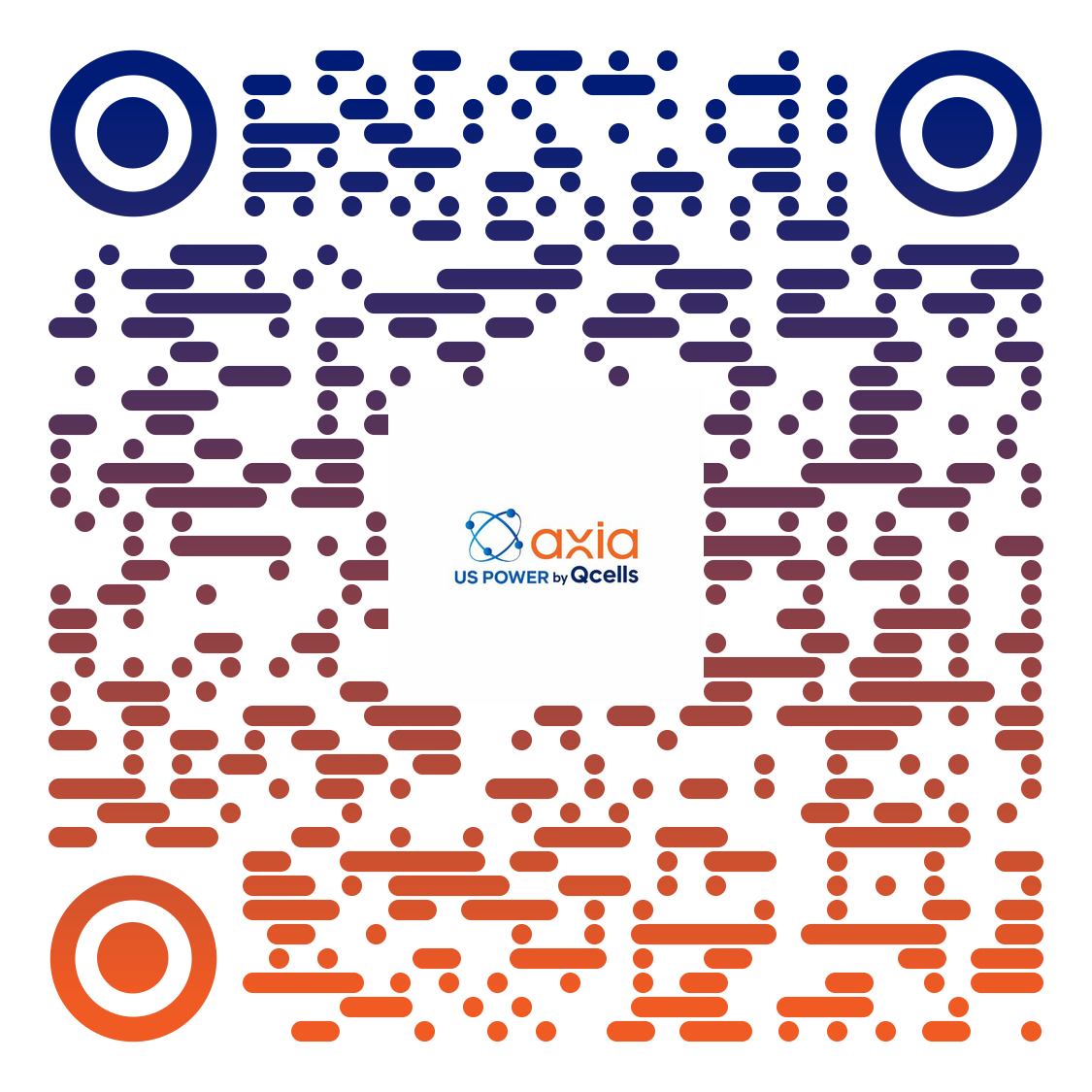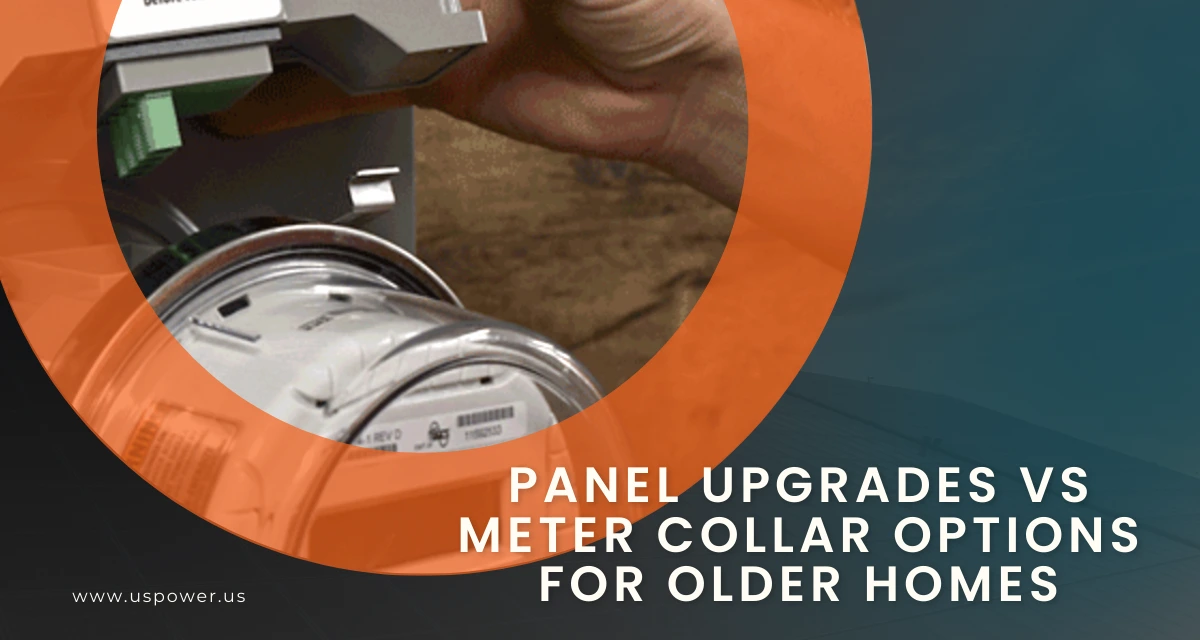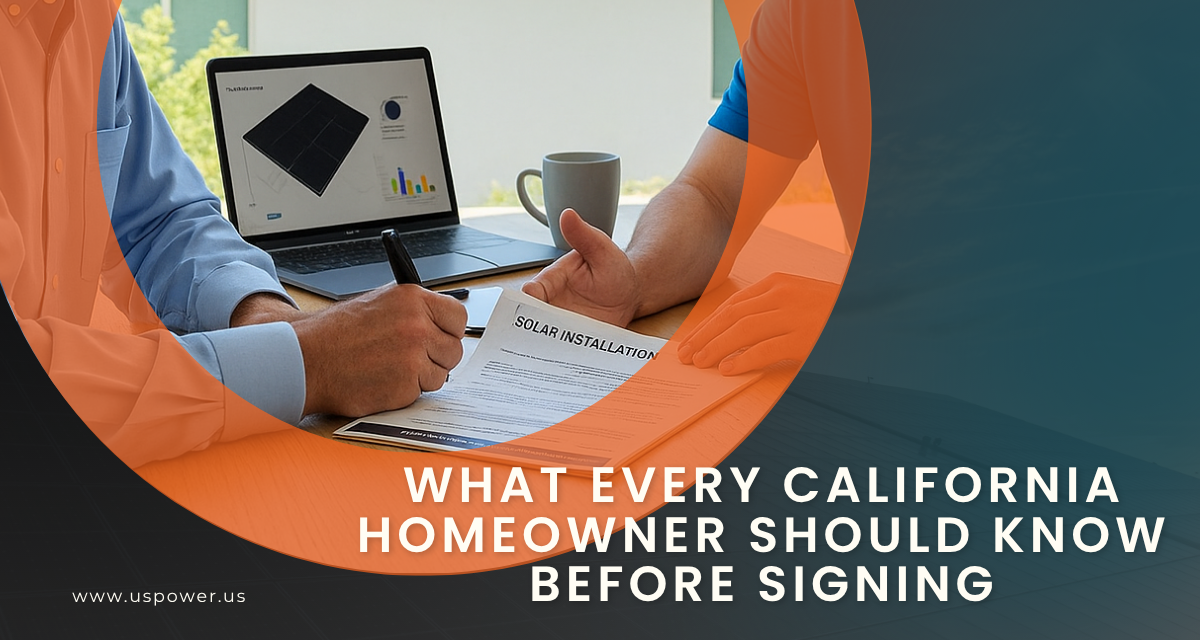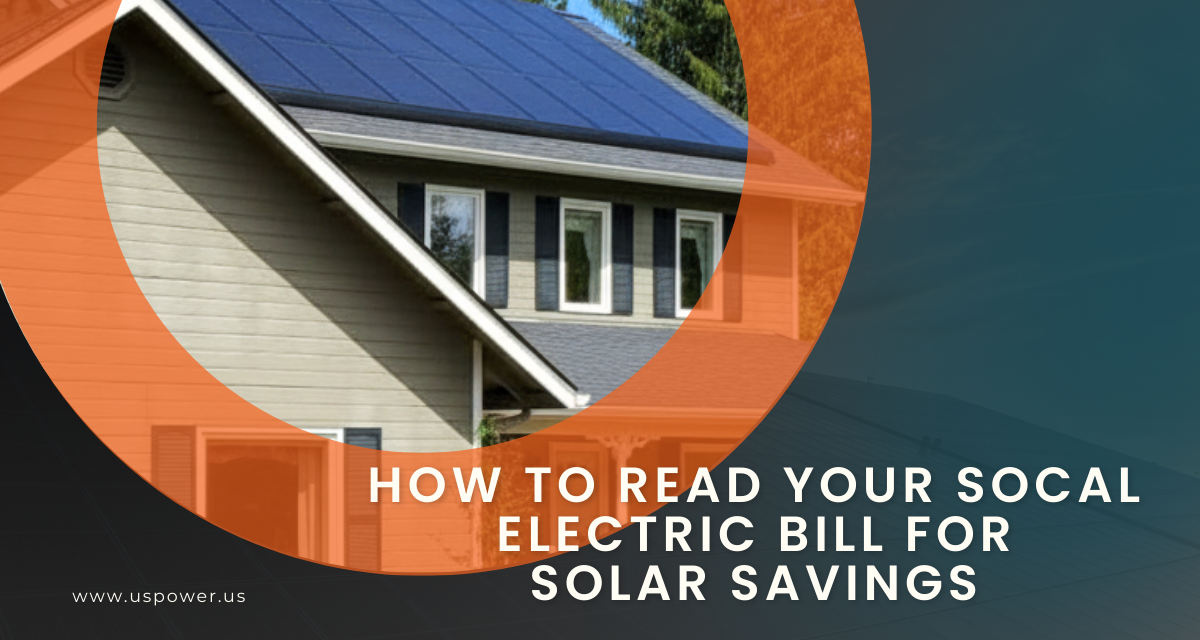Choosing Between AC vs DC Solar Batteries for Energy Savings

Solar and Roofing Advisor
Compare AC and DC-coupled solar systems for energy efficiency, reliability, and cost. Get expert guidance SoCal's US Power solar consultants.

For homeowners across Southern California looking to pair solar panels with battery storage, the coupling method—how the system links PV generation and battery storage—makes a major difference. At US Power, we install high-efficiency solar systems (including our exclusive partnership with Q Cells, factory-direct and American-made), and we help homeowners in Southern California choose the right combination of solar + battery. One of the key decisions is AC-coupled vs DC-coupled batteries.
In this article:
- We explain how each system works.
- We review the advantages and limitations of each for a Southern California home.
- We provide a clear recommendation for when each method makes sense—based on installation scenario, budget, and future needs.
- We wrap up with a strong call to action, because the right system today can dramatically boost savings and resilience.
How AC and DC Coupling Work
What happens in an AC-coupled system
In an AC-coupled solar + battery setup:
- The solar panels on the roof generate DC (direct current) electricity.
- That DC is converted to AC (alternating current) via your solar inverter so it can power home loads or be exported to the grid.
- If excess energy is available and a battery is present, that AC power may then be converted back to DC so it can be stored in the battery.
- When you later draw from the battery, the stored DC must be converted again to AC to power home appliances.
- Thus: multiple conversions occur (DC→AC→DC→AC) in many designs.
According to industry resources, this leads to slightly lower round-trip efficiency.
AC coupling is often the simpler path when you already have a solar system installed and you’re adding battery storage later.
What happens in a DC-coupled system
In a DC-coupled setup:
- The solar panels generate DC electricity.
- That DC can go directly (or via a charge controller/hybrid inverter) into the battery storage system (DC form).
- Then when you draw from the battery to power your home, only one conversion (from DC → AC) is required.
- Because fewer conversions occur, the system is inherently more efficient in terms of energy stored vs. energy used.
DC coupling is often the smart choice when the solar panels and the battery are installed together as a new system rather than retrofitting.
Comparison: Pros, Cons & How They Relate to Southern California
Efficiency & Energy Loss
- DC coupling generally offers higher round-trip efficiency (for example up to ~95-97% in some sources) because fewer conversions happen.
- AC coupling often has more conversion losses (some sources suggest about 10-15% loss in certain AC systems) because of the extra DC-to-AC, AC-to-DC steps.
- For homeowners in Southern California (where high sunshine and high time-of-use rates are common), efficiency can translate into real dollar savings over time.
Installation / Retrofit Considerations
- If a home already has a solar system (e.g., panels + inverter) and is adding a battery later, AC coupling tends to be less disruptive and often more cost-effective because you can integrate the battery without replacing existing solar inverters.
- If you’re planning both solar + battery at once (a “greenfield” system) then DC coupling is often more optimal—given the higher efficiency and more streamlined equipment architecture.
Cost & Equipment
- Fewer parts = potentially lower hardware cost for DC coupling (e.g., one hybrid inverter instead of separate solar inverter + battery inverter).
- However: retrofitting a DC-coupled system into an existing solar installation can be more labor-intensive (rewiring, new inverter, etc) and thus upfront cost may be higher.
- AC-coupled systems may offer more flexibility for mixed equipment brands and incremental upgrades.
Reliability & Maintenance
- With AC coupling, because you may have separate inverters for solar and battery, if one fails the other may still operate, offering a degree of fault-tolerance. (E.g., solar inverter fails, battery might still supply backup loads via battery inverter).
- With DC coupling (especially a fully integrated hybrid inverter), a single inverter failure can impact both solar generation and storage/reserves; thus reliability of that one unit becomes critical.
- Component lifespan, warranty terms, and manufacturer ecosystem matter (see next section on warranties specifically for SoCal context).
Local Utility & Incentive Considerations (Southern California)
- California utility programs often reward self-consumption, resilience (backup power) and time-of-use shifting. Having higher-efficiency battery storage helps.
- With high sunshine and increasing risks of outages (PSPS events, grid instability in fire-risk areas), the backup benefits of battery storage are meaningful.
- In places like Southern California, where electricity rates tend to be higher than national average and net-export value may be limited (depending on the utility and net energy metering policies), maximizing the use of your own solar + battery makes sense.
- For retrofit homeowners, the AC-coupled path may reduce the time to install and optimize cost; for new solar + battery homeowners, DC coupling may deliver stronger value over time.
Warranty & Future Proofing
- From warranty comparisons: some battery brand warranties specify limits (cycles, temperature conditions) that may differ between AC vs DC coupling. (E.g., one brand limiting cycles, capacity retention after 10 years).
- For Southern California homes, you’ll want to check how your battery/warranty handles high ambient temperatures, frequent cycling (if you will use battery daily for self-consumption) and fire mitigation rules for rooftop systems.
When to Choose AC Coupling — When to Choose DC Coupling
Choose AC Coupling when:
- You already have a functioning solar panel system (panels + inverter) and now you want to add battery storage.
- Your priority is more about adding resilience/back-up without doing a full system redesign.
- You prefer flexibility to add battery later, possibly with a different brand than your existing solar inverter.
- You are constrained by budget and want to minimize disruption and installation timeline.
- Your utility setup allows grid-charging of the battery (some AC systems allow both solar + grid to charge battery).
Choose DC Coupling when:
- You are installing your solar panels and battery storage at the same time (greenfield setup).
- You want the highest round-trip efficiency and lower energy losses.
- You plan to actively use battery storage for self-consumption, maximize savings, and want to shift as much solar energy into usable home loads as possible.
- You want to simplify the system architecture with fewer separate components (one hybrid inverter managing both solar + battery) and are comfortable with a unified brand/system.
- You live in an area with high rates for electricity, frequent grid interruption or you want more of a “whole-home backup” model rather than just a “coupon” system.
What This Means for Southern California Homeowners
Since we at US Power specialize in Southern California installs (LA County, Ventura, Orange, Inland Empire, San Diego), here’s what our experience suggests for homeowners in this region:
- With California’s strong sunlight and rising electricity costs, efficiency gains matter. If you install solar + battery now, you’ll want to capture as many kilowatt-hours of your solar array as possible.
- If your current system is older or you already have panels installed and are simply upgrading to add a battery, AC coupling is often the practical, cost-efficient path.
- If you’re building or doing a full roof-to-meter solar + battery install now, pairing your factory-direct Q Cells panels with a DC-coupled battery could deliver greater long-term savings and resilience—especially if you intend to ride through outages or shift loads (EV charging, A/C, etc).
- Given the California policy environment (net export value reductions, time-of-use peak rates) the value of storing and using your own solar energy is higher now than in many past years. That leans in favor of systems with higher efficiency (i.e., DC-coupled).
- Also consider fire-zone/risk-mitigation regulations, local permitting, and warranty/maintenance support; integrated reputable systems (which we can help design) matter.
Myth-Busting & Key Facts for 2025
- Myth: “AC coupling is always cheaper.” — Not always. While upfront cost for retrofit may be lower, the lifetime cost of higher conversion losses may outweigh the initial savings for many in SoCal.
- Myth: “DC coupling cannot be used with existing systems.” — It can, but often requires more work (inverter replacement, rewiring) and thus may lose its cost advantage in retrofit cases.
- Fact: Round-trip efficiency differences matter. For example, AC systems may lose ~5-10% vs DC systems with fewer conversions.
- Fact: Installation timing and system architecture are key. For a new build, DC coupling often gives a stronger value proposition.
- Fact: In California, given the strong sunshine and high peak/TOU rates, maximizing self-consumption (and thus efficient storage) offers more value than just exporting to grid.
How US Power Helps You Decide
At US Power, we bring to you:
- A full system design including panels (we install premium factory-direct Q Cells panels) + battery options.
- An analysis of your home’s load profile, utility rate schedule (e.g., TOU), shading, and future usage (EVs, A/C, home loads).
- A clear recommendation: retrofit path vs full install; AC vs DC coupling; cost vs long-term savings; backup vs self-consumption.
- Local Southern California permitting, grid interconnection, and rebate/incentive guidance.
- Warranty and service support—we ensure that your system is designed for reliability, efficiency and value over its lifetime.
Don’t wait—with utility rates rising, grid reliability changing and solar + battery equipment becoming more efficient and affordable, now is the time to lock in your energy independence.
Book an appointment today for a free solar + battery consultation: we will help you compare AC-coupled vs DC-coupled for your home, show the expected savings over 10, 20 years, and design a system that fits your budget, your roof and your future.
Secure your Southern California home with a smarter solar + storage solution—and let us show you how the right coupling method makes all the difference.
Related Articles
Our Related Blogs
Electrify older SoCal homes smartly with US Power—skip huge upfront panel upgrades.
The 30% solar credit ends soon — don’t sign blind. We are here to help you switch!
Learn how to decode your California electric bill to maximize solar savings.
Our Solar and Roof Brand Partners








We empower communities and businesses to harness clean, renewable solar energy solutions that drive sustainable growth.
Ready to Own Your Power? Call us today!
818-650-8010
Copyright © 2025 US Power - Axia by QCells. All Rights Reserved.
Privacy is important to us, so you have the option of disabling certain types of storage that may not be necessary for the basic functioning of the website. Blocking categories may impact your experience on the website.
Essential
These items are required to enable basic website functionality.
Personalization
These items allow the website to remember choices you make (such as your user name, language, or the region you are in) and provide enhanced, more personal features.
Marketing
These items are used to deliver advertising that is more relevant to you and your interests.
Analytics
These items help the website operator understand how its website performs, how visitors interact with the site, and whether there may be technical issues.
We and our third-party partners use cookies and other technologies to enhance and track your experience on this site, conduct analytics, and personalize marketing to you. By using the site, you agree to our use of these technologies, including recording and monitoring your interactions with the site.
Get an instant solar estimate using satellite!









